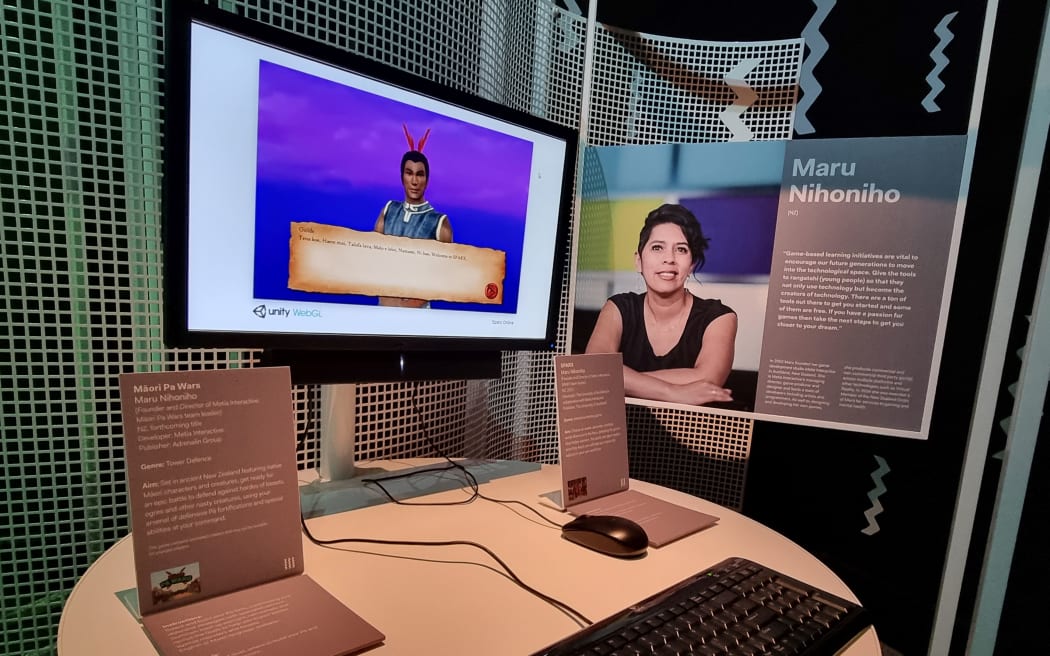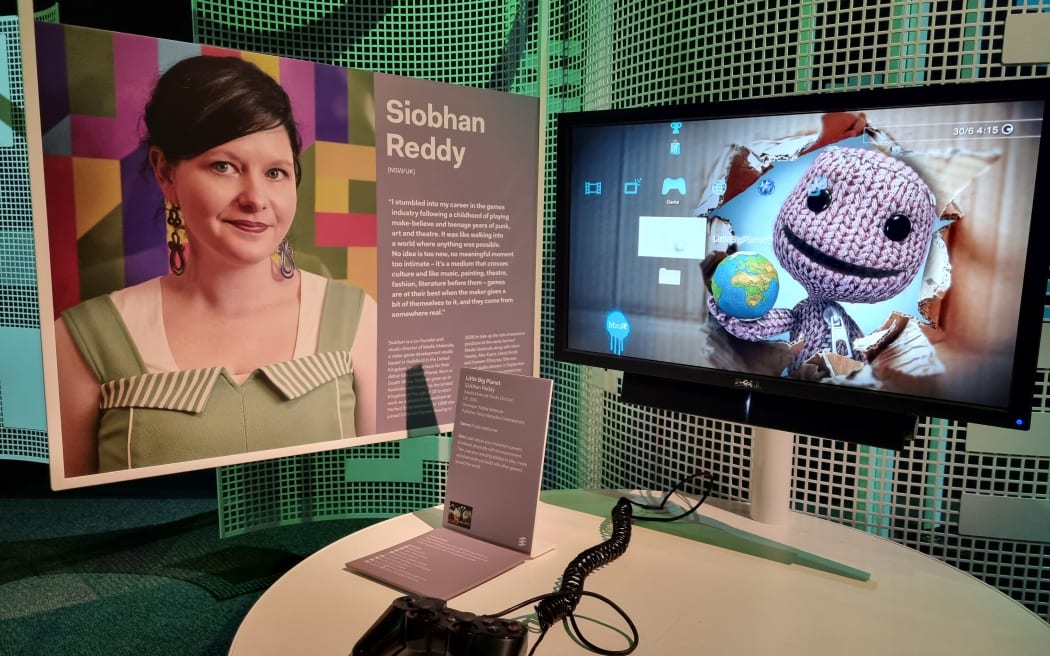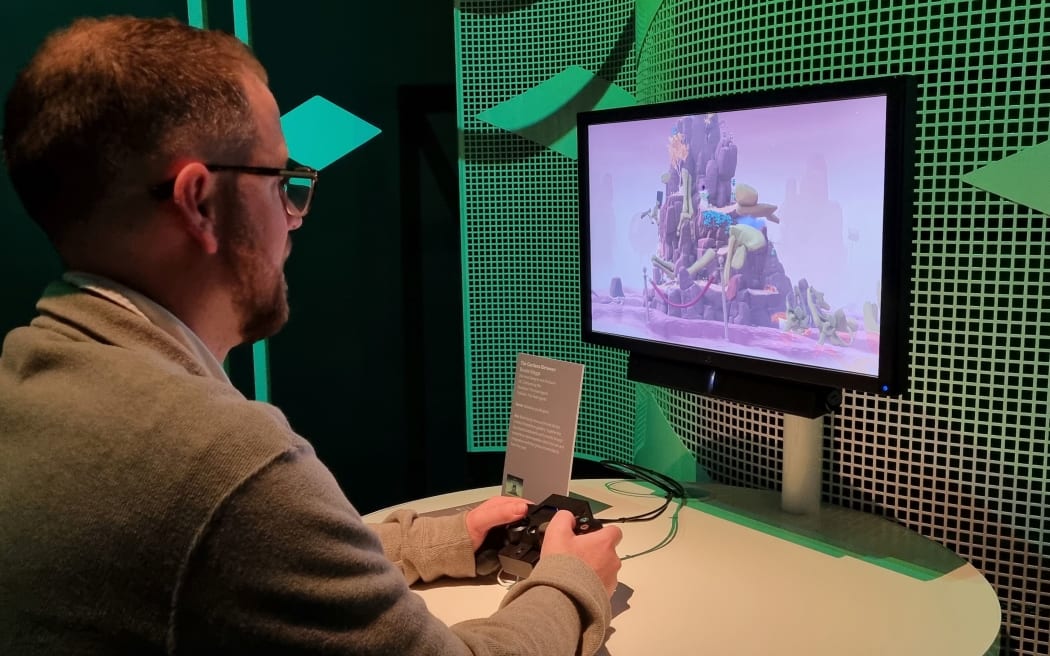Ready Player One? Otago Museum is transforming into an interactive game zone as part of its latest exhibition.
The hands on exhibition opens tomorrow.
Photo: RNZ / Tess Brunton
Code Breakers: Women in Games celebrates video games created by New Zealand and Australian women and offers visitors a chance to try their skills.
Maru Nihoniho’s curiosity for video games was first triggered while playing Space Invaders at her local fish and chips shop as a child.
She founded her game design and development company, Metia Interactive, in 2003 after a multimedia course and a career in retail and hospitality.
There had been plenty of challenges along the way, she said.
“With the comments and the ‘do you work in marketing?’ I’m like, no, I’m a developer, and ‘girls don’t make games’, ‘you’re going to find it really hard in the industry’ and all that.
“It was almost enough to put me off. But it didn’t.”
She is being featured in Otago Museum’s Code Breakers exhibition alongside two of her games: SPARX – an award winning online therapy game – and Māori Pā Wars.

Maru Nihoniho has not let negative comments deter her from setting up her own game design business.
Photo: RNZ / Tess Brunton
She has a special focus on cultural content and Māori storytelling, saying it was important to have diverse voices in gaming.
“So that we can tell our own stories with that authentic voice as well, and it’s important for other people who may not be Māori or indigenous to learn those stories too.
“It’s a really great platform for storytelling because you’re in control of the experience as you’re playing through.”
She hoped more women would join the industry.
“Don’t let the technical aspect frighten you because anything can be learnt.
“What you do need to have inside you is that drive to want to learn and to want to do it because if you have that then anything is possible.”
Dunedin is no stranger to video games.
It was home to CODE, the New Zealand Centre of Digital Excellence, which aimed to progress the burgeoning industry and grow a $1 billion video game development industry over ten years.
Exhibition sponsor Runaway Play is a game developer and publisher based in Dunedin and was behind the viral #GirlsBehindTheGames campaign.
Chief executive Zoe Hobson was keen to kick misconceptions about the industry to the kerb.
“It’s challenging the narrative that might exist in a father’s head about what the games industry is or what working in games is so that when he’s talking to his daughters, how does he talk about that?
“It’s challenging the narrative in a brother’s head of who plays games, who makes games so that he doesn’t tease his sister about that.
“It’s challenging the narrative that has existed in our media for some time, and I think that’s really important.”

One of the exhibits.
Photo: RNZ / Tess Brunton
Dunedin was the place to be for games, she said.
“There is a real opportunity for Dunedin to grow this industry and become known as the place to go to work in games and to work in really exciting digital businesses.”
Otago Museum marketing coordinator Charles Buchan said it was the first time the exhibition has been on display in Aotearoa.
There were ten interactive zones offering different types of games while a custom-built audio tour has each creator speaking about their time in the industry.

Charles Buchan believes the event will be a good opportunity to attract new talent to the industry.
Photo: RNZ / Tess Brunton
The museum has been working with local gaming companies to showcase what they do.
This weekend the museum will host a gamers’ weekend with Runaway Play showing their game Flutter in virtual reality, live character drawings, cosplay competitions and cosplay craft.
“I think this exhibition is a great way of not just influencing the women coming through, but just anyone that’s slightly interested in gaming or coding, and the future that it might lead to.”
The free Code Breakers: Women in Games exhibition starts tomorrow and runs until the end of October.
The exhibition was curated by Melbourne museum ACMI.

Be the first to comment